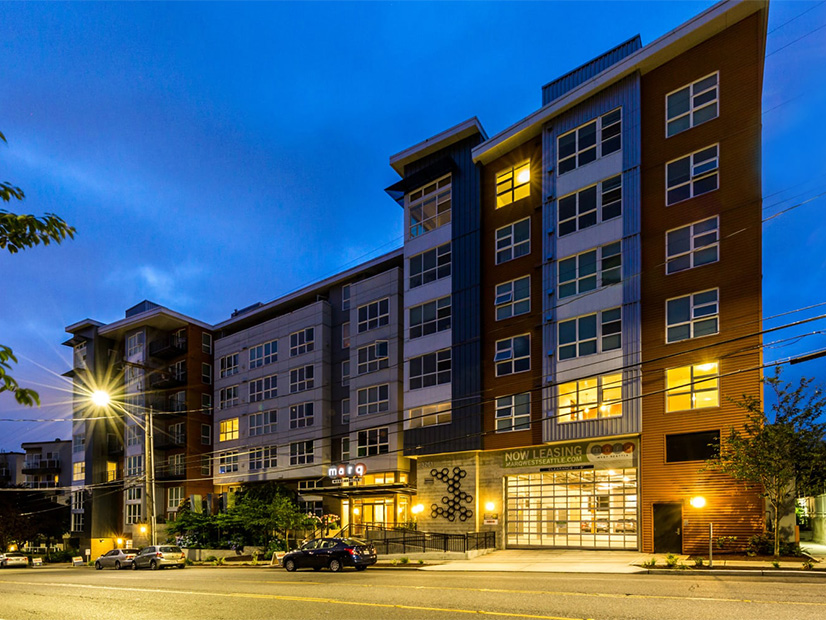
A rent control plank prompted the greatest opposition to a Washington Senate bill to trim the carbon footprint of roughly 50,000 buildings in the state.
Senate Bill 5722 is being modified to include a cap on rent increases in order for building owners to receive state money to trim carbon emissions from their structures, Anna Lising, senior policy adviser to Gov. Jay Inslee, told the Senate Environment, Energy and Technology Committee Thursday at a public hearing. The bill is part of Inslee’s package of climate-related legislation unveiled in December. (See Flood of Climate Bills to Greet Wash. Lawmakers.)
While the size of the incentive fund is currently not in the bill, speculation emerged in Thursday’s hearing that it could be in the range of $150 million.
The bill by Sen. Joe Nguyen (D) calls for the state’s Department of Commerce to set draft standards to trim carbon by Dec. 1, 2023, for buildings ranging from 20,000 to 50,000 square feet. A 2019 law already addresses the carbon footprints of buildings that are greater than 50,000 square feet, which number about 10,000 in the state. The state must inform the affected building owners by July 1, 2025.
The Commerce Department would fine-tune the standards and submit a report to the legislature in 2029. It would have to adopt the standards in 2030, and the new rules would go into effect in 2031.
Twenty-seven percent of Washington’s carbon emissions come from buildings, the second largest emitter behind vehicles at 45%. In 2018, Washington’s carbon emissions totaled 99.57 million metric tons (MMT). A 2008 law set emission goals of 50 MMT by 2030, 27 MMT by 2040 and 5 MMT by 2050.
“We cannot meet our greenhouse gas limits without substantial action in the building sector,” said Emily Salzberg, an official with the Commerce Department.
The rent control cap prompted pushback from construction, real estate, utilities and business lobbyists. They argued that linking rent control — tentatively set for four years after the improvements are made — with receiving state aid for that work will lead building owners to stay away from applying for state financial help.
“We want the government to have more skin in the game with the incentives,” said Rod Kauffman, president of the Building Owners and Managers Association of Seattle King County.
Environmental groups, the cities of Shoreline and Olympia, and several private citizens supported the bill. Twelve people testified in favor of the bill and 13 against it. Three hundred twenty-eight people signed up to state their positions without testifying with 290 supporting the bill and 38 opposing it.


